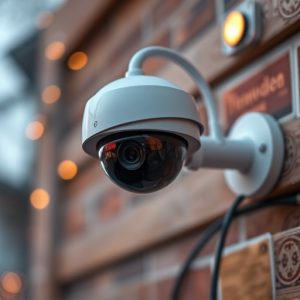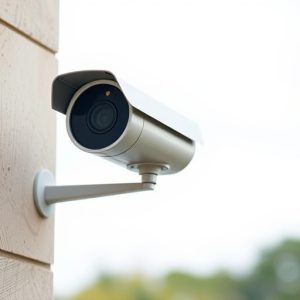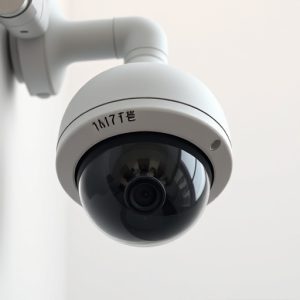Realistic Fake CCTV Cameras: Unveiling Motion-Activated Visual Deception
Fake CCTV Cameras With Motion are growing in popularity as affordable, discreet security solutions f…….
Fake CCTV Cameras With Motion are growing in popularity as affordable, discreet security solutions for homes, businesses, and public spaces. Combining psychological intimidation with advanced engineering, these realistic-looking replicas detect motion, record high-res footage, and serve as powerful deterrents against crime. While they offer diverse applications from security to entertainment, their use raises legal and ethical concerns regarding privacy and potential misuse, especially in public areas without consent.
In an era where surveillance is omnipresent, realistic fake CCTV cameras offer a surprising twist. This article explores the concept of fake surveillance equipment, delving into its various forms and functions, particularly motion-activated variants. We dissect the remarkable design and visual realism achieved in these replicas, tracing their growing applications across diverse sectors. Furthermore, we navigate the legal and ethical grey areas surrounding their use, providing a comprehensive guide to this intriguing technology.
- Understanding Fake CCTV Cameras: Unveiling the Concept
- Types of Motion-Activated Fake Surveillance Equipment
- Design and Visual Realism in Fake CCTV Cameras
- Applications: Where are Fake Surveillance Devices Used?
- Legal and Ethical Considerations: Navigating the Grey Areas
Understanding Fake CCTV Cameras: Unveiling the Concept
In recent years, there’s a growing trend in the market for realistic-looking fake surveillance equipment, particularly Fake CCTV Cameras With Motion. These sophisticated replicas are designed to mimic genuine security cameras, providing an effective deterrent for potential criminals without the hefty cost and logistical constraints of traditional CCTV installations. They offer a discreet and often convincing solution for businesses, homes, and public spaces seeking enhanced security while keeping costs low.
The concept behind Fake CCTV Cameras With Motion is twofold. First, they serve as visible deterrents, sending a clear message to would-be intruders that their actions are being watched. Second, their realistic appearance and motion sensitivity ensure that any attempted vandalism or mischief is quickly detected, providing valuable time for response. This innovative technology leverages the power of psychological intimidation and advanced engineering to contribute significantly to overall security without breaking the bank.
Types of Motion-Activated Fake Surveillance Equipment
Fake CCTV cameras with motion activation are a popular choice for those looking to deter potential intruders or create the illusion of enhanced security. These devices mimic the appearance and functionality of real surveillance equipment, offering a range of options to suit various needs. One type features advanced sensors that detect movement within a specified range, triggering the camera to record high-resolution footage. These cameras can be placed discretely in gardens, on rooftops, or even inside homes, providing a powerful deterrent against unwanted visitors.
Another variant utilizes infrared technology to capture heat signatures, ensuring clear images even in low-light conditions or complete darkness. Some models also incorporate audio capabilities, allowing them to emit a warning sound upon detection of movement, further intimidating potential thieves or intruders. With their realistic design and versatile features, these motion-activated fake surveillance equipment offer an affordable and effective way to enhance home security without breaking the bank.
Design and Visual Realism in Fake CCTV Cameras
The design and visual realism of fake CCTV cameras have advanced significantly, making them nearly indistinguishable from genuine surveillance equipment. These replicas often incorporate intricate details such as lens reflections, intricate circuit patterns, and subtle imperfections that mimic real hardware. Advanced manufacturing techniques, like 3D printing and precision molding, enable the creation of plastic casings with a realistic texture and finish, complete with subtle markings and logos that add to their authenticity.
Motion sensors are a key feature in many fake CCTV cameras, designed to trigger the device’s activation and capture motion-induced footage. These sensors not only enhance the camera’s functional realism but also contribute to its visual allure, mimicking real surveillance technology. By replicating the physical appearance and behavioral responses of genuine CCTV cameras, these fakes blur the line between reality and simulation, making them appealing for both practical use in creative settings and as decorative pieces in film, television, and theater productions.
Applications: Where are Fake Surveillance Devices Used?
Fake surveillance equipment, including realistic-looking fake CCTV cameras with motion detection capabilities, has a variety of applications across different sectors. These devices are often employed as a deterrent in high-security areas such as banks, government facilities, and corporate offices, where their presence alone can discourage potential intruders.
In addition to security enhancements, fake CCTV cameras find use in film sets, stage productions, and special events, where they help create the illusion of comprehensive surveillance without the cost and logistical overhead of deploying actual security systems. Their versatility makes them a popular choice for both practical and aesthetic purposes, contributing to immersive experiences across various industries.
Legal and Ethical Considerations: Navigating the Grey Areas
The rise in popularity of realistic-looking fake surveillance equipment, such as Fake CCTV Cameras With Motion, has sparked a debate regarding legal and ethical boundaries. While these devices offer an intriguing solution for homeowners seeking added security, their use raises complex issues. One primary concern is privacy invasion; placing these fake cameras in public spaces or private properties without explicit consent can lead to significant ethical dilemmas.
Additionally, the legal grey area surrounds the potential misuse of such equipment. Fake CCTV cameras might be used to intimidate or harass individuals, leading to false security and a sense of vulnerability. Striking a balance between personal security and privacy rights is essential, especially as technology advances, blurring the lines between what’s real and simulated in surveillance systems.
Realistic fake surveillance equipment, particularly motion-activated fake CCTV cameras, offer a unique blend of innovation and deception. From enhancing security awareness to providing creative solutions for various applications, these devices blur the lines between reality and simulation. While legal and ethical considerations must be addressed, especially regarding their misuse, the strategic deployment of fake CCTV cameras with motion can contribute to safer environments without breaking the bank. As technology advances, we must strike a balance between privacy protection and leveraging innovative tools like these to create more secure communities.


